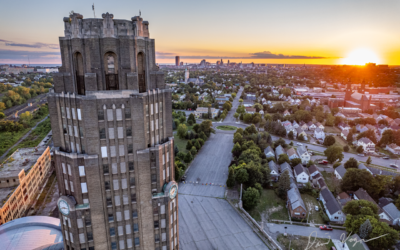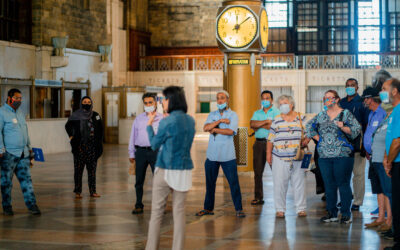MOVED BY THE MISSION
The Central Terminal Restoration Corporation (CTRC) is a 501c3c non-profit organization driven by a mission to develop the Buffalo Central Terminal – a majestic historic landmark – as a lasting cultural and economic hub for the community. Founded in 1997 by dedicated preservationists, the CTRC has cared for this living landmark for 20 years with the steadfast and generous support of scores of volunteers.
Our future is in motion. Game changing investment from the East Side Avenues initiative in 2019 has enabled the CTRC to grow organizational capacity and build unprecedented momentum for the future of the Buffalo Central Terminal.
Years of planning with the community have shaped a shared vision to transform Buffalo Central Terminal into a new kind of connective force. In the coming year, we will take a monumental step forward to engage like-minded partners who put people first—architects, engineers, developers—to help realize aspirations that are central to this initiative.
MOVED BY CONNECTION
The Buffalo Central Terminal is one of the most beloved buildings in the region. Nearly all Western New Yorkers have a connection to the Terminal and a story to share. Tell us yours!
Share your Central Terminal storyMOVED BY HISTORY
The Central Terminal is a brilliant example of Art Deco architecture. Come experience a piece of Buffalo’s history and see where our future is headed.
History & RestorationCentral Terminal Restoration Corporation
Board of Directors and Staff
James K. Morrell
Chair
Annie O’Neil-White
Vice Chair
Thomas Kucharski
Treasurer
John Jiloty
Secretary
Thomas Beauford Jr.
Paul V. Harris, PMP
Angela Klein
Kim LaVare, PMP
Gustavo A. Lima, AIA
Michael Nisengard
Christina P. Orsi
Rishawn T. Sonubi, AIA
Carl Skompinski
Yuri Hreshchyshyn
In Memoriam: Director Emeritus



